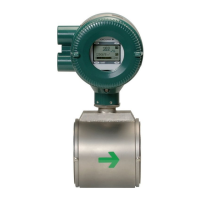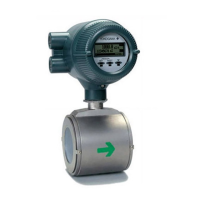<4.Conguration>
26
IM 01E21A02-03EN
4.5 Communication Setting
To set the communication function, it is necessary to change the database residing in SM-VFD.
4.5.1 VCR Setting
SetVCR(VirtualCommunicationRelationship),whichspeciesthecalledpartyfor
communication and resources. This product has 38 VCRs whose application can be changed,
exceptfortherstVCR,whichisusedformanagement.ThisproducthasVCRsoffourtypes:
Server(QUB)VCR
A Server responds to requests from a host. This communication needs data exchange.
ThistypeofcommunicationiscalledQUB(QueuedUser-triggeredBidirectional)VCR.
Source(QUU)VCR
A Source multicasts alarms or trends to other devices. This type of communication is
calledQUU(QueuedUser-triggeredUnidirectional)VCR.
Publisher(BNU)VCR
The output of the function block is sent to the function block of other device. This type
ofcommunicationiscalledBNU(BueredNetwork-triggeredUnidirectional)VCR.
Subscriber(BNU)VCR
The output of the function block of other device is received by the function block of
thisproduct.ThistypeofcommunicationiscalledBNU(BueredNetwork-triggered
Unidirectional)VCR.
Each VCR has the parameters listed in Table 4.4. Parameters must be changed together for
eachVCRbecausemodicationofindividualparametersmaycauseinconsistentoperation.
Table 4.4 VCR Static Entry
Sub-index Parameter Name Description
1 FasArTypeAndRole
Indicatesthetypeandroleofcommunication(VCR).The
following 4 types are used for this product.
0x32: Server
Server(Respondstorequestsfromhost.)
0x44: Source
Source(Transmitsalarmortrend.)
0x66: Publisher
(Theoutputofthefunctionblockissenttothefunction
blockofotherdevice.)
0x76: Subscriber
(Theoutputofthefunctionblockofotherdeviceis
receivedbythefunctionblockofthisproduct.)
2 FasDllLocalAddr
Setstheaddress(DLSAPorDLCEP)tospecifyVCRinthis
product.
The range from 20 to F7 in hexadecimal notation is used.
3
FasDllCongured
RemoteAddr
Sets the node address of the called party for communication
andtheaddress(DLSAPorDLCEP)usedtospecifyVCRin
that address. For DLSAP or DLCEP, a range from 20 to F7
in hexadecimal notation is used. Addresses in Subindex 2
and 3 need to be set to the same contents of the VCR as the
calledparty(localandremotearereversed).
4 FasDllSDAP
Speciesthequalityofcommunication.Usually,setoneof
the following four types.
0x2B: Server
0x01:Source(Alert)
0x03:Source(Trend)
0x91: Publisher/Subscriber
5
FasDllMaxConrm
DelayOnConnect
To establish connection for communication, set the maximum
wait time for the called party’s response in ms. Typical setting
atfactoryshippingis60seconds(60,000).
6
FasDllMaxConrm
DelayOnData
For request of data, set the maximum wait time for the called
party’s response in ms. Typical setting at factory shipping is
60seconds(60,000).

